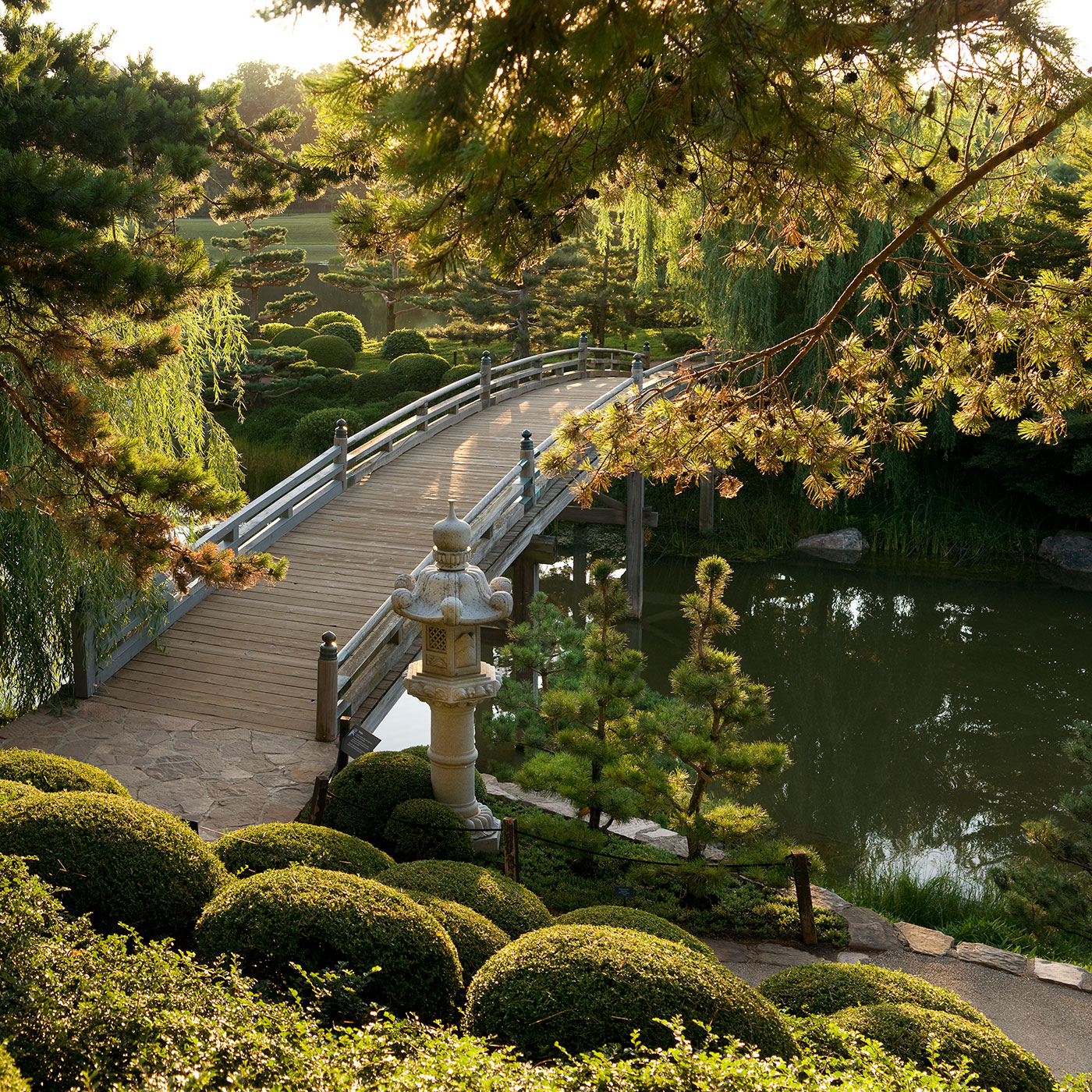
Where Love is in the Air My Chicago Botanic Garden
A small Japanese garden bridge should serve as a transition between different areas of the garden. If you don't have a natural stream flowing through your garden, the Japanese garden bridge can span a dry creek bed or small valley, or it simply can serve as a decoration. Pressure-treated lumber works best to keep the bridge from rotting.
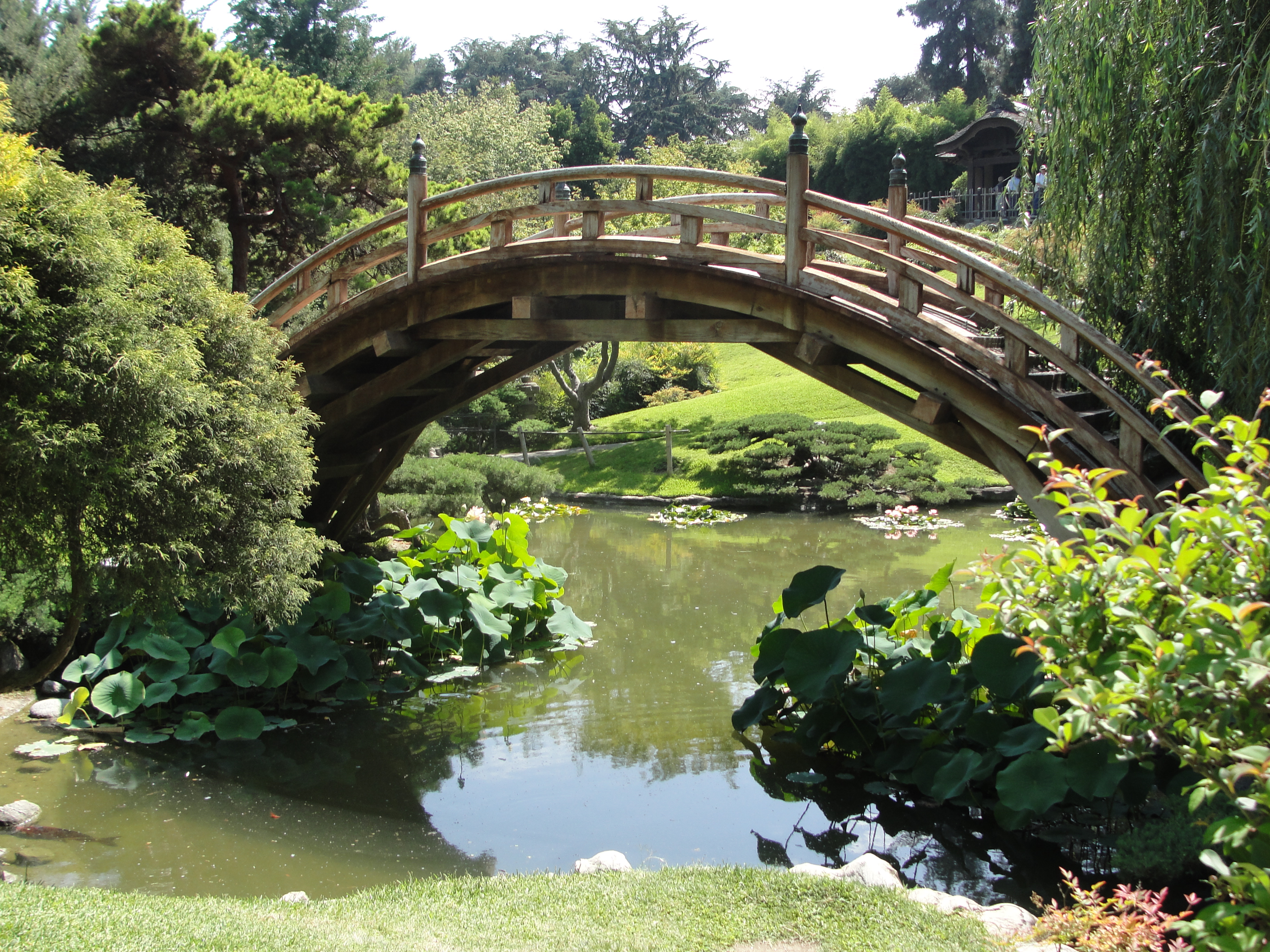
Huntington Gardens Chinese & Japanese garden « ((little fat notebook))
The Japanese Garden was designed by Ken Nakajima in 1992, includes a teahouse, waterfalls, bridges, and stone paths that wander among crepe myrtles, azaleas, Japanese maples, dogwoods and cherry trees. Hershey Gardens: Hershey: Pennsylvania: Includes a Japanese garden with rare giant sequoias, Dawn Redwood trees, Japanese maples and more.
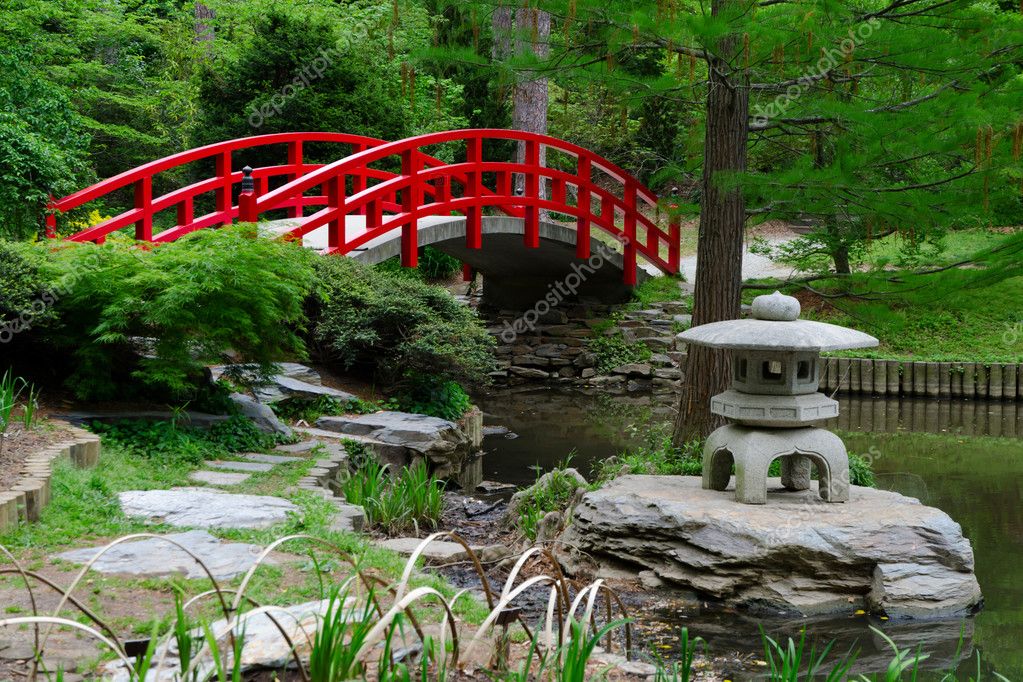
Red bridge in Japanese garden — Stock Photo © kzlobastov 11369369
Wood Basic Wooden Bridge in Japanese garden Wood is the most popular material because it is affordable and easy to use. Wooden bridges can be made of hardwood bamboo, wooden boards, and railway sleepers. These are durable and can withstand all weather elements. Stone Stone is also a common material used for making Japanese bridges.

The Significance of Bridges in Japanese Gardening ⋆ Big Blog Of Gardening
Japanese garden ideas designed by Maitanne Hunt (Image credit: Maïtanne Hunt Gardens & Landscapes) Many Japanese garden ideas are designed to be admired from inside the home, often framed by a picture window or arch. Faced with a secluded courtyard garden? Then why not try something similar for your own garden design ideas.

Crazy Japanese Bridge
Wooden footbridges, a traditional feature in Japanese gardens, create a sense of journey in even the smallest garden. Typical styles include wooden arched bridges (soribashi), wooden flat bridges (hirabashi), and arched stone bridges (sori ishibashi). Here we've rounded up 10 curved wooden garden bridges to consider.

Japanese garden red bridge Japanese garden, Famous gardens, Japanese bridge
As such, an essential element in a Japanese garden is the presence of a bridge. This architectural element enhances the idea of serenity and it is often used as a transition element between the various parts of the garden. You should build a Japanese garden bridge even if you don't have a pond or water stream in the garden.

HDR shot of the Japanese bridge at the Huntington Library Japanese garden. Japanese garden
The Earth Bridge. Curved pathways weave throughout the Japanese Friendship Garden's 12 acres. Along the way, you'll stumble upon stepping stone pathways and bridges to keep you focused along the way. Curved paths in Japanese gardens guide visitors to important features. Also, they keep evil spirits from entering.

Pin by FANCY4TRAVEL on Japanese Gardens Japanese garden, Japanese style garden, Ponds backyard
The Japanese Garden is one of the oldest gardens at The Huntington. It was started over a century ago and has undergone a great deal of change over the past 100 years. The garden is nine acres and has grown from a fixture in a private estate to a thriving example of American interpretations of Japanese garden-making over the past 100 years.

Japanese Garden Bridge Stock Image Image 21682651
Most Japanese garden bridges are small, arched, and red. Although the bridge doesn't need to be painted, it is the color exception. When you can't paint anything else, you are allowed to paint the bridge red. This is a focal point and in Japanese culture, stepping on a bridge gives us a choice. We can cross over, make a change, or turn back.

I seriously need a red bridge (Japanese) in my backyard. Backyard bridges, Japanese garden
Step 1: Materials Design The size and design of the bridge will have to fit the garden, this is a small garden so I made the bridge as slender as possible so as not to overpower its surroundings. Materials I used sawn treated pine, very rough cut pieces but they're cheap and treated to make them more durable.
:max_bytes(150000):strip_icc()/Japanese-Garden-Bridge-56a49ec63df78cf772834cfd.jpg)
5 Garden Bridges You'll Want For Your Own Home
Additionally Japanese bridges are a way to give your backyard an eye catching feature and increase the usable space. In addition Our crafted bridges are available in different sizes to provide customization and help you complete the installation without modifications to your garden layout.
Red bridge in japanese garden stock photo Crushpixel
In this guide, we'll explain the steps necessary to build a Japanese garden bridge.Building a Japanese garden bridge requires several materials and tools. You will need wood for the bridge's structure, such as cedar, redwood, or teak; a saw; screws; and nails. You will also need rope or rope-like material for the rails, such as manila rope.
Bridge in the Japanese Garden at the botanical garden Wednesday morning r/StLouis
Since we are talking about garden bridges, we will be featuring Japanese garden bridges today. Take a look at how these garden bridges added Japanese touches to its design. Some of them made use of curves while others played with straight lines. Whatever they used, they were still able to come

Japanese Garden Bridge Stock Photos Image 17206733
2. Plan the bridge dimensions: Measure the length and width of the bridge area. Consider the size of the garden and available space. Aim for a small and delicate bridge that does not overwhelm the garden. 3. Choose the right materials: Lumber, metal, or stone are great options to use for a Japanese garden bridge.

Fabulous Japanese wooden garden bridge inspiration in red
The Japanese bridges plays a major part in a Japanese garden. Here is another new edition and personally designed by Redwood Garden Bridges. Only offered from our website. Here we have New addition to our bridge line up. It was designed to fit into a Japanese theme ,It has low custom crafted rails on each side of the bridge.
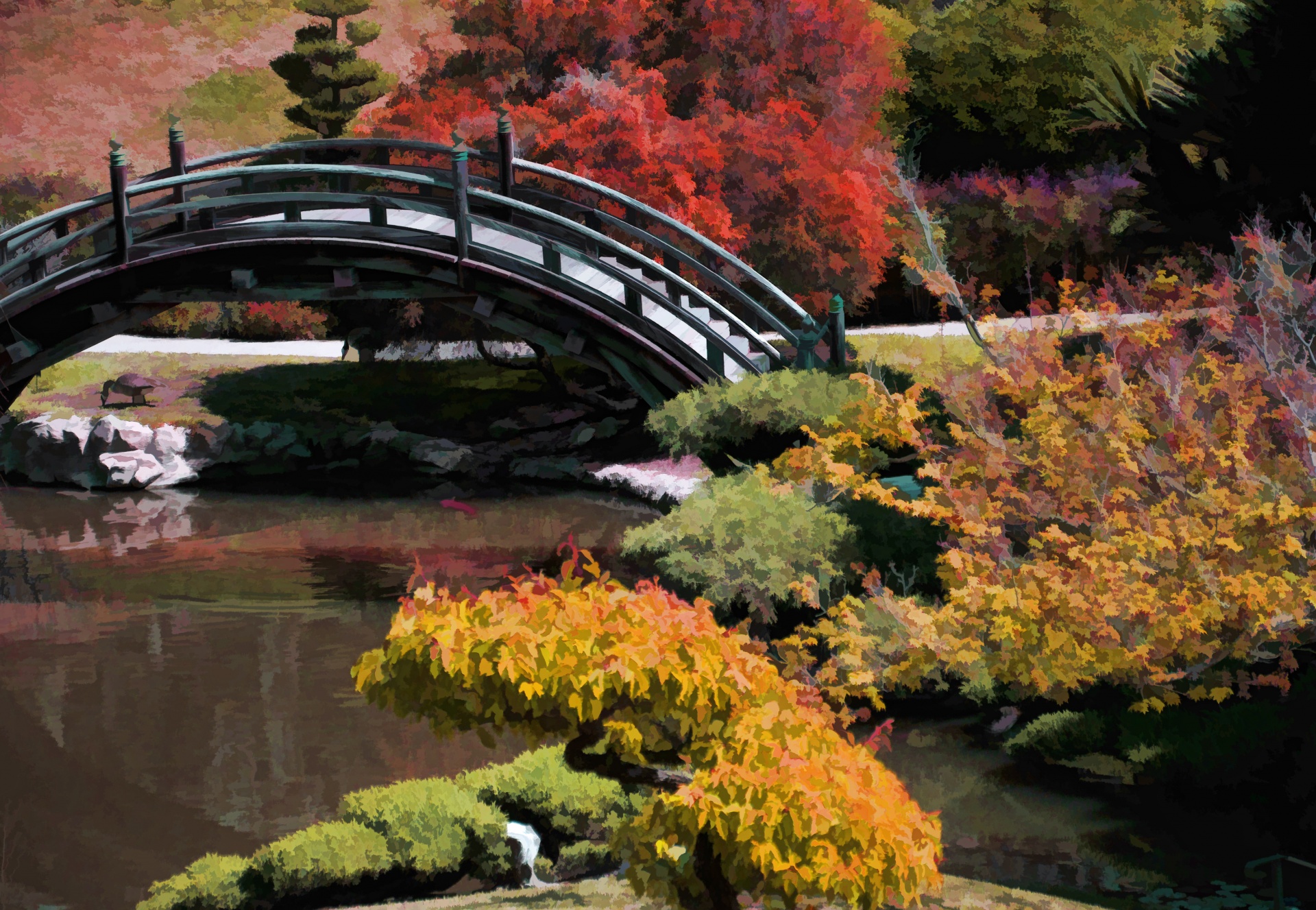
Japanese Garden Bridge Free Stock Photo Public Domain Pictures
Japanese gardens (日本庭園, nihon teien) are traditional gardens whose designs are accompanied by Japanese aesthetics and philosophical ideas, avoid artificial ornamentation, and highlight the natural landscape.